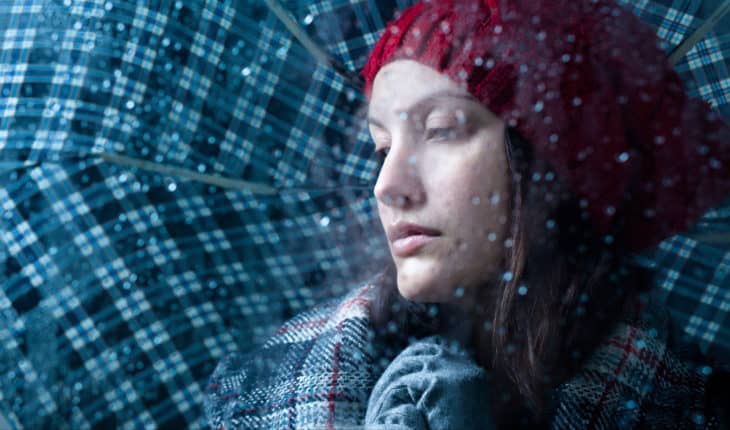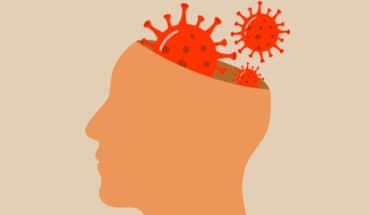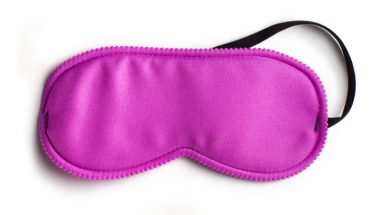As clocks went back this weekend, a Priory expert explains ‘SAD’ syndrome, why more people might experience it this year and why snow (if it comes) can actually help:
• About 10-20% of people in the UK experience mildly debilitating symptoms of SAD or “winter blues”; older adults may experience it for the first time after spending a lot more time indoors
• Working from home, and other COVID restrictions looks set to limit our exposure to the great outdoors and natural light becomes limited
• Some adults will suffer recurrent major depressive episodes linked to the seasons
• SAD is a complex depressive illness triggered by lack of sunlight which affects levels of melatonin and serotonin in the brain
• But surprisingly, snow can help some sufferers because snow reflects light
Priory psychiatrist Dr Natasha Bijlani offers seven tips for coping with SAD
Working from home, and other recent COVID restrictions, may well increase the depressive aspects of Seasonal Affective Disorder (or so-called SAD syndrome) this year as staying indoors and avoiding venturing outdoors limits our exposure to natural light, says Priory consultant psychiatrist Dr Natasha Bijlani.
And while many won’t welcome the idea of winter, snow can actually help, she says, because it has the effect of reflecting what natural light there is.
Dr Bijlani, of Priory’s Roehampton Hospital in south-west London, says: “It is well recognised that SAD may be related to changes in the amount of daylight during autumn and winter months, which can affect the levels of serotonin and melatonin in the brain that influence mood.”
Serotonin is a neurotransmitter, she explains, responsible for sending messages between nerve cells and producing responses. Melatonin is a hormone.
“During the night, the brain releases melatonin which contributes to making us feel drowsy and induces sleep. At daybreak, the effect of bright light, coupled with the natural rhythms of the brain, suppresses melatonin. In those susceptible to SAD, not being exposed to sufficient light, on dull winter days, can lead to the development of the symptoms of SAD.”
SAD symptoms tend to recur each winter and continue until spring. It’s not unusual for older people to notice symptoms for the first time if they start to spend much more time indoors due to health, or mobility reasons – a situation which millions more face this year because of lockdown restrictions.
Interestingly, a white winter could help sufferers. Dr Bijlani says: “Snow reflects what light there is, and makes the darkness more bearable.”
SAD is not thought to occur in countries around the equator, but it is a problem in parts of the world where the body’s daily rhythm is disturbed by dawn and dusk coming closer together in winter. Light therapy has been shown to be effective in up to 85% of SAD cases, says Dr Bijlani.
“People with SAD sometimes need four hours a day of special bright light at 10 times the intensity of ordinary lighting.
“It’s a very simple treatment, but when used regularly throughout the winter months, it can take away the worst of the feelings.” She recommends using a ‘lightbox’ when the first symptoms appear. Doctors may also prescribe selective serotonin reuptake inhibitors (SSRIs). These work by increasing the levels of serotonin.
She says those with SAD might experience low mood for most of the day and suffer lethargy; a greater desire to sleep; tension and an inability to tolerate stress; decreased interest in sex and physical contact; cravings for sugary food and those that are high in carbohydrates.
Those affected might feel a loss of self-esteem, with feelings of hopelessness or despair.
Dr Bijlani’s advice:
- For some people with mild symptoms, these can be alleviated by working in more brightly-lit areas, and keeping blinds wide open during the day
- People with “SAD” sometimes need four hours a day of special bright light at 10 times the intensity of ordinary lighting. It’s a very simple treatment, but when used regularly throughout the winter months, it can take away the worst of the feelings
- Make time for exercise outdoors such as cycling or regular walks. Make sure you are exercising outdoors where you are able, and eat well – foods that are rich in a variety of vitamins are helpful in warding off the symptoms of depression. Exercising produces endorphins in the brain (which stimulate feelings of happiness), so try to take a walk at lunchtime, play a sport with family if social distancing allows – be active in a way which you enjoy
- Be sociable where you can, even if that means remotely. Planning evenings or an afternoon talking with a friend, even if on the phone or Zoom, can be a really good way to give structure to your day and avoid loneliness and negative thoughts or feelings
- Don’t sleep in too late. Staying in bed too long will limit your exposure to light and excessive sleeping actually contributes towards lethargy
- Psychological treatment focusing around cognitive behaviour therapy – a talking therapy – can also be helpful
- If problems persist and you are concerned about symptoms of depression, talk to your GP or contact the Priory. Doctors may also prescribe selective serotonin reuptake inhibitors (SSRIs).
- Half way to Health: Dry January Motivation - 21st January 2025
- Priory’s Reaction to Government’s Social Care Workforce Update - 15th January 2024
- Responsible alcohol consumption during ‘Office Party Season’ - 10th December 2023







